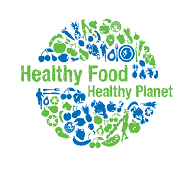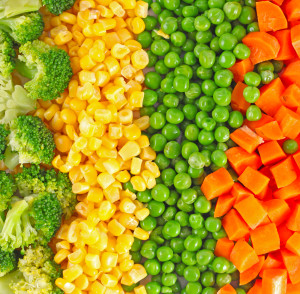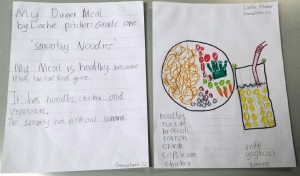Menu planning: How much food should be provided?
The Assessment Guide for element 2.2.1 states that Assessors may observe “children being provided with food that is consistent with the Dietary Guidelines for for Children and Adolescents in Australia”.
It is considered best practice, for settings providing food, to provide 50% of children’s recommended daily intake of foods over morning tea, lunch and afternoon tea. The Australian Dietary Guidelines outline the recommended daily intake of foods for children.
The tables below outline the different food groups and the recommended daily intake each food group for children of different ages.
Table 1: Recommended minimum serves per day for children 13 – 24 months
| Food Group |
Serves required per day |
Serves required
in care 50% |
| Vegetables & Legumes |
2 |
1 |
| Fruit |
½ |
¼ |
| Grain (Cereal) Foods |
4 |
2 |
| Lean Meat and Alternatives |
1 |
½ |
| Milk, yoghurt, cheese & alternatives |
1 |
½ |
Table 2: Recommended minimum serves per day for children 2-3 years
| Food Group |
Serves required per day |
Serves required
in care 50% |
| Vegetables & Legumes |
2 ½ |
1 ¼ |
| Fruit |
1 |
½ |
| Grain (Cereal) Foods |
4 |
2 |
| Lean Meat and Alternatives |
1 |
½ |
| Milk, yoghurt, cheese & alternatives |
1 ½ |
¾ |
Table 3: Recommended minimum serves per day for children 4-8 years
| Food Group |
Serves required per day |
Serves required
in care 50% |
| Vegetables & Legumes |
4½ |
2 ¼ |
| Fruit |
1½ |
¾ |
| Grain (Cereal) Foods |
4 |
2 |
| Lean Meat and Alternatives |
1½ |
¾ |
| Milk, yoghurt, cheese & alternatives |
1 ½ – 2 |
1 |
Most settings which provide food do a good job of providing plenty of healthy foods. But making sure enough of each food group is provided can prove to be a little trickier.
NAQ Nutrition Dietitans complete menu assessments for Early Childhood Education and Care settings. We have put together a some of the common issues we see on menus in settings and our tips to make sure you are on track.
Common issue: Not enough food from the lean meats and poultry, fish, eggs, tofu, nuts and seeds, and legumes/ beans food group on days that sandwiches are served for lunch
It is common for settings to not provide enough food from this food group on days which sandwiches are served for lunch. Ham is a fairly common sandwich filling. But ham is a processed meat and does not fit into the lean meats and poultry, fish, eggs, tofu, nuts and seeds, and legumes/ beans food group.
Our Tips: To provide food from the lean meats and poultry, fish, eggs, tofu, nuts and seeds, and legumes/ beans food group on sandwich day consider the following ideas.
- Include eggs, tuna, baked beans or poached chicken as a sandwich filling.
- Add mince meatballs or boiled eggs to snack platters at morning or afternoon tea
- Include baked beans as a snack.
- Incorporate legumes into baked goods.
Common issue: Not including grains everyday
Grain foods include rice, pasta, breads, crispbreads, English muffins, wraps, oats and high fibre cereals. Baked goods (eg sweet cakes or biscuits) with added sugar or a lot of added fat do not fit into this food group. We also commonly find that settings are only using white flour in baked goods.
Our tips: Ideally setting menus would provide at least 2 serves from the grains food group per child. Two serves is equivalent to any of the following options:
- 2 slices bread
- 1 cup cooked pasta
- 1 cup cooked rice
- 1/4 cup oats and 3 crispbread
- 1/2 cup cooked rice and 1 small English muffin
Have a look at your menu to check you offer at least 2 serves grains per day per child. You may need to consider some additions to your menu on some days, such as:
- adding a small serve of rice or cous cous at lunch
- adding crispbreads/ grain crackers as an option at a snack
- adding English muffin or bread open grills as an option at a snack
- adding oats or muesli to yoghurt.
- Use wholemeal flour (instead of or in combination with white flour) to increase the fibre content.
Common issue: Not enough vegetables
Most settings we assess are usually providing some vegetables, however most are not achieving the required serves per day for this food group.
Our tips: The best way to tell if you provide enough vegetables is to check your the total amount of vegetables you use each day. One serve of vegetables is 75 grams. Have a look at the example in the table below. The table outlines how you can determine the total weight of vegetables you should be providing each day. Compare this to the actual volume of vegetables you provide.
| Age group |
Example – Average number of children in care per day |
Recommended amount of vegetables to be provided each day, while in care, per child |
Totals recommended amount of vegetables to be provided each day, while in care, per age group |
| 12-24 months |
15 children |
0.075 kg (1 serve) |
1.125 kg |
| 2-3 years |
34 children |
0.095 kg (1 ¼ serves) |
3.230 kg |
| 4-5 years |
22 children |
0.170 kg (2 ¼ serves) |
3.740 kg |
|
|
| Total vegetables per day for setting |
8.095 kilograms |
|
|
For ideas about increasing the amount of vegetables on your menu, check out this previous article.
Check out these sample menus for more ideas:
Sample menu 1
Sample menu 2






























